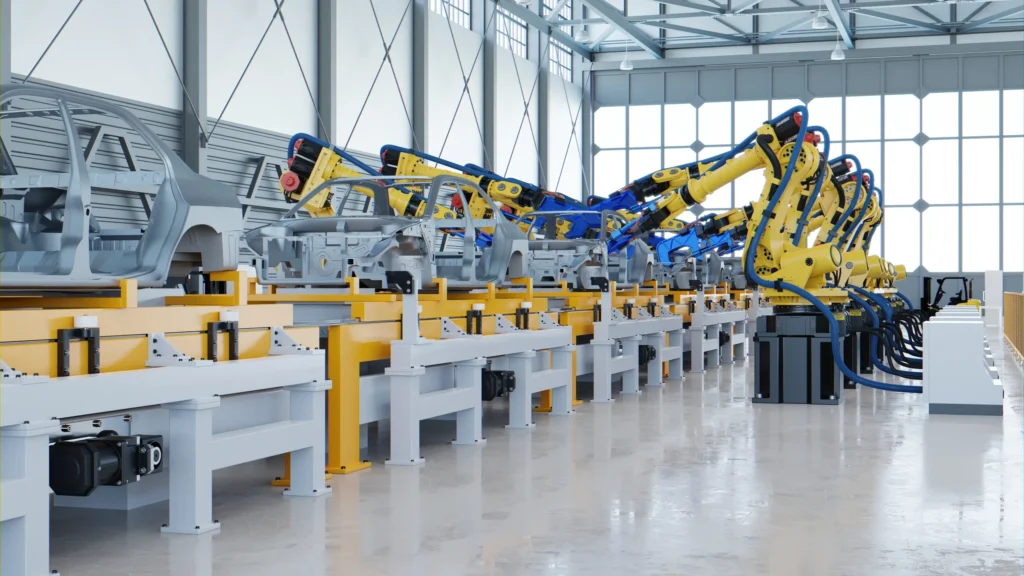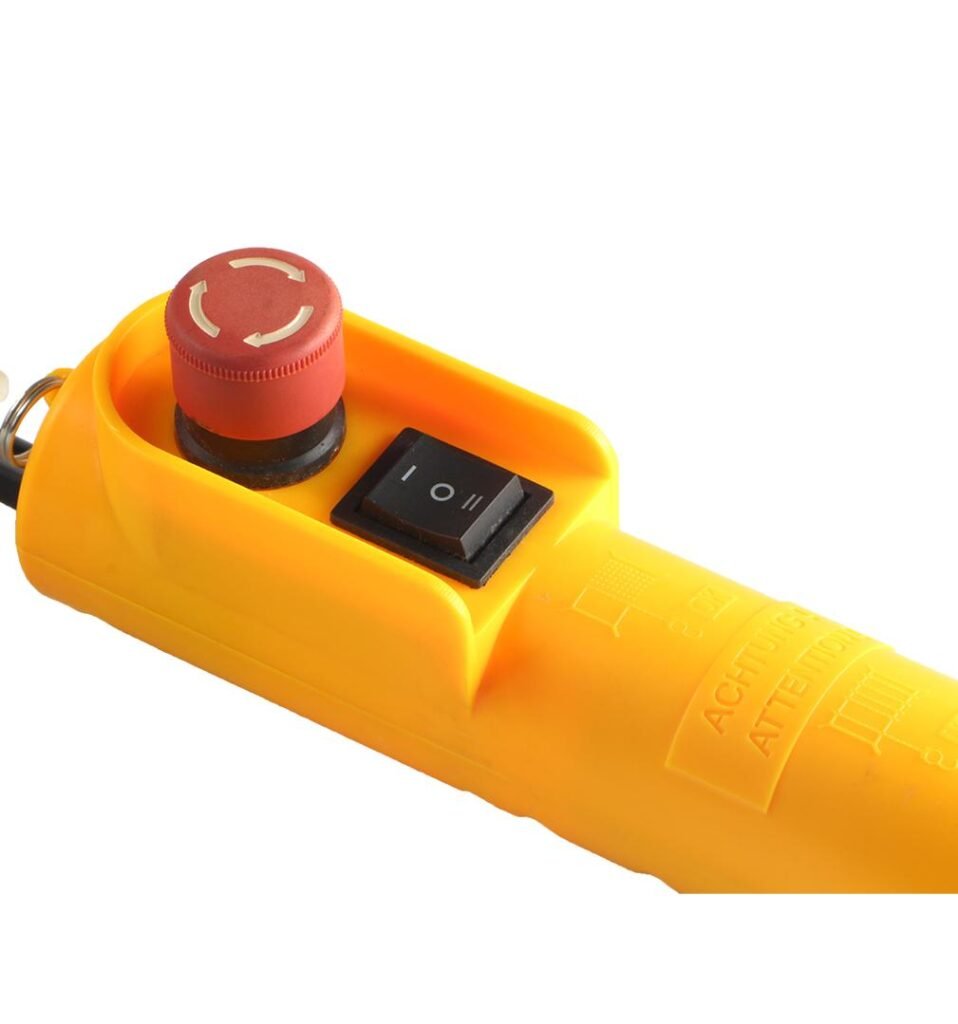산업용 펜던트 제어 스테이션 실무 정보
다음 프로젝트에 적합한 펜던트 컨트롤 스테이션을 찾고 계신가요? 그렇다면 제대로 찾아 오셨습니다. 크레인용 제어 장치를 선택하는 엔지니어든 공급업체를 비교하는 구매 관리자이든, 이 가이드는 펜던트 제어 스테이션에 대해 현명하고 안전한 결정을 내리고 [...]에서 최대한의 가치를 얻는 데 도움이 될 것입니다.
자세히 보기

핸드헬드 디바이스만으로 거대한 크레인을 조종한다고 상상해 보세요. 미래지향적으로 들리시죠? 그 미래는 바로 지금입니다! 크레인 원격 제어 는 작업자가 안전한 거리에서 무선으로 크레인을 제어할 수 있도록 하여 무거운 물건을 들어 올리는 작업을 혁신적으로 변화시켰습니다. 이는 안전성을 향상시킬 뿐만 아니라 작업자에게 더 나은 유연성과 제어력을 제공하여 생산성을 향상시킵니다. 교량 크레인, 오버헤드 크레인, 산업용 호이스트 등 어떤 크레인을 관리하든 크레인 원격 제어가 무엇인지 이해하면 작업 효율성을 크게 높일 수 있습니다.
핵심은 COP-21JK 크레인 원격 제어는 작업자가 크레인의 움직임을 무선으로 관리할 수 있는 전자 장치입니다. 일반적으로 휴대용 송신기와 크레인에 장착된 수신기의 두 가지 주요 부품으로 구성됩니다. 작업자가 송신기의 버튼을 누르거나 조이스틱을 조작하면 송신기는 암호화된 무선 주파수 신호를 수신기로 보냅니다. 이 신호는 크레인이 호이스트를 위아래로 움직이거나 왼쪽 또는 오른쪽으로 이동하는 등의 특정 작업을 수행하도록 지시합니다.
크레인 원격 제어 시스템의 기본 구성 요소
| 구성 요소 | 설명 |
|---|---|
| 송신기 | 무선으로 명령을 전송하는 핸드헬드 디바이스 |
| 수신기 | 크레인에 장착되어 명령을 수신하고 실행합니다. |
| 컨트롤러 장치 | 신호 처리 및 크레인 기능 제어 |
무선 신호는 초당 여러 번 전송되어 거의 즉각적인 응답이 가능하므로 운영자는 실시간으로 정밀한 기동을 수행할 수 있습니다. 고급 시스템에는 다른 무선 기기의 간섭을 피하기 위한 자동 주파수 호핑 기능도 포함되어 있어 중단 없는 제어를 보장합니다. 또한 데이터 암호화와 같은 보안 조치로 권한이 있는 사용자만 크레인을 조작할 수 있습니다.
크레인 리모컨은 푸시 버튼 모델이나 조이스틱 컨트롤러 등 다양한 유형으로 제공됩니다. 예를 들어 조이스틱 리모컨은 섬세한 리프트에 적합한 부드러운 비례 제어 기능을 제공하는 반면 푸시 버튼 리모컨은 간단한 작업을 위한 간단한 켜기/끄기 명령을 제공합니다.
많은 산업 시설에서 크레인 원격 제어로 전환하는 이유는 무엇일까요? 그 이유는 다음과 같습니다:
크레인 리모컨의 장점 비교
| 혜택 | 설명 |
|---|---|
| 안전 | 작업자를 위험한 근접 거리에서 제거 |
| 유연성 | 다양한 작업자 포지셔닝 지원 |
| 효율성 | 정확한 제어로 작업 속도 향상 |
| 에너지 절약 | 배터리 수명이 길어져 가동 중단 시간 절약 |
| 신호 안정성 | 명령 지연을 방지하는 고급 기술 |
무선 크레인 리모컨은 라디오를 사용합니다. 빈도 (RF) 기술을 사용하여 송신기에서 수신기로 신호를 전송합니다. 송신기는 버튼 누름이나 조이스틱의 움직임을 디지털 신호로 변환하여 무단 액세스를 방지하기 위해 암호화합니다. 그러면 수신기는 이러한 명령을 해독하고 그에 따라 크레인의 모터를 작동시킵니다.
이러한 시스템에서 가장 중요한 것은 안전입니다. 대부분의 리모컨에는 비상 정지 버튼, 과부하 보호 및 고장 안전 메커니즘이 장착되어 있습니다. 예를 들어 리모컨 연결이 끊어지거나 신호 품질이 떨어지면 시스템이 크레인을 자동으로 정지시켜 사고를 방지합니다. 또한 인체공학적 설계로 작업자가 피로감 없이 장시간 편안하게 리모컨을 사용할 수 있습니다.
크레인 리모컨에 일반적으로 사용되는 안전 기능
| 기능 | 목적 |
|---|---|
| 비상 정지 | 사고 예방을 위한 즉각적인 종료 |
| 신호 품질 확인 | 명령이 제대로 수신되는지 확인 |
| 과부하 보호 | 크레인이 용량 이상으로 들어올리는 것을 방지 |
| 페일 세이프 모드 | 통신이 끊기면 크레인 종료 |


크레인 원격 제어로 안전과 효율성을 높이는 방법을 알아보세요. 신뢰할 수 있는 크레인 리모컨을 살펴보고 지금 맞춤형 솔루션을 요청하세요!
완벽한 크레인 리모컨을 선택하는 것은 크레인 유형, 작업 환경 및 운영 요구 사항과 관련된 몇 가지 요소에 따라 달라집니다. 다음은 간단한 가이드입니다:
| 요인 | 고려 사항 |
|---|---|
| 크레인 유형 | 오버헤드, 갠트리, 타워 크레인에는 특정 제어 기능이 필요합니다. |
| 제어 인터페이스 | 간편한 푸시 버튼, 정밀한 제어를 위한 조이스틱 |
| 내구성 | 환경에 따른 방수, 방진에 대한 IP 등급 |
| 주파수 범위 | 작동 거리 및 간섭 수준에 적합해야 합니다. |
| 사용자 지정 기능 | 필요에 따라 추가 제어 또는 표시 |
어떤 시스템이 운영에 가장 적합한지 잘 모르겠다면 전문 공급업체와 상담하면 효율성과 안전성을 극대화하는 시스템을 맞춤 제작하는 데 도움이 될 수 있습니다. 전문가의 조언이 필요하거나 크레인의 요구 사항에 맞는 견적을 요청하려면 주저하지 마세요.
크레인 원격 제어 시장은 다음과 같은 발전으로 빠르게 진화하고 있습니다:
기술이 발전함에 따라 이러한 원격 제어는 현대 산업 운영에서 없어서는 안 될 도구가 되어 안전, 효율성 및 신뢰성을 새로운 차원으로 끌어올리고 있습니다.
크레인 원격 제어 는 오늘날 크레인 운영 방식에서 중요한 도약을 의미합니다. 크레인은 작업자가 위험 구역으로부터 거리를 두어 안전을 개선하고, 반응성이 뛰어난 무선 제어로 효율성을 높이며, 복잡한 리프팅 작업에 놀라운 유연성을 제공합니다. 크레인의 구성 요소와 기능을 이해하고 적합한 크레인을 선택하면 산업 운영의 수준을 크게 높일 수 있습니다.
시설에서 더 스마트하고 안전한 크레인 관리를 도입할 준비가 되었다면 산업용 컨트롤러 옵션을 살펴보는 것이 다음 단계입니다. 지금 바로 문의하여 필요에 맞는 최고의 원격 제어 솔루션을 찾고 크레인 운영의 수준을 높여보세요!
휴대용 송신기에서 크레인의 수신기로 무선 명령을 전송하는 무선 장치로, 작업자가 크레인의 움직임을 원격으로 제어할 수 있습니다.
주로 푸시 버튼과 조이스틱 스타일이 있으며, 각각 특정 제어 정밀도 요구 사항에 적합합니다.
일반적으로 모델과 환경에 따라 최대 수백 미터까지 가능합니다.
자동 주파수 호핑과 강력한 암호화를 통해 안정적인 통신을 보장합니다.
정기적으로 배터리를 점검하고, 디바이스 표면을 청소하고, 손상 여부를 검사하고, 제조업체의 지침을 따르세요.